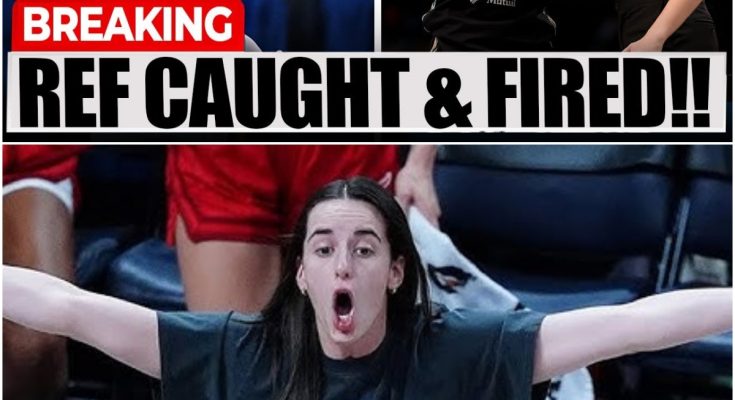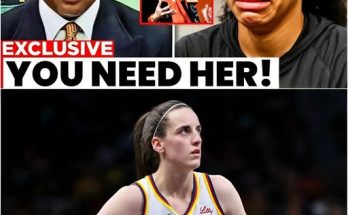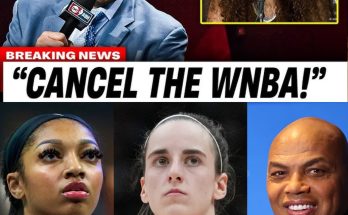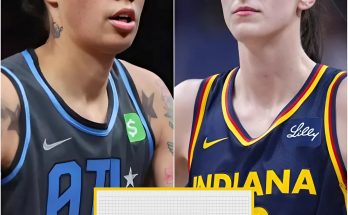When Caitlin Clark entered the WNBA, she was heralded as a game-changer—a once-in-a-generation talent whose arrival would usher in a new era of women’s basketball. The excitement was palpable: ticket sales soared, TV ratings shattered records, and arenas buzzed with energy every time she stepped on the court. Yet, just a few weeks into her rookie season, Clark’s journey has become a lightning rod for controversy, shining a harsh light on the league’s officiating and raising urgent questions about how the WNBA protects its stars.
The Rise of a Superstar
Clark’s college career at Iowa was the stuff of legend. She played 139 consecutive games without missing a single contest, rewriting record books and captivating millions. Her move to the Indiana Fever brought a surge of interest to the WNBA not seen in decades. Suddenly, fans who had never watched a women’s professional basketball game before were tuning in, buying tickets, and investing in merchandise. The league’s future seemed brighter than ever.
But with that spotlight came immense pressure—not just on Clark, but on the entire WNBA ecosystem.
A Tougher Game—and Tougher Calls
From her first professional game, it was clear Clark would face a level of physicality that set her apart from her peers. Opposing defenses swarmed her, delivering hard screens, aggressive body checks, and relentless full-court pressure. What was surprising, however, was not just the intensity of the play, but the frequency with which officials seemed to let rough contact go unpunished.
Game after game, Clark was knocked to the floor, hit with off-ball hacks, and forced to play through a barrage of missed whistles. Fans and analysts began to notice a pattern: fouls that would have been called for other top players were routinely ignored when Clark was involved. Coaches, teammates, and even rival players started voicing their concerns. Was Clark being held to a different standard?
The Officiating Crisis
The controversy reached a boiling point when Clark suffered a left quad strain that would sideline her for at least two weeks. For many, this wasn’t just an unfortunate injury—it felt like the inevitable result of a season’s worth of unchecked physical play. Social media erupted with slow-motion replays of ignored fouls and missed calls, and the conversation quickly shifted from Clark’s on-court heroics to the league’s officiating crisis.
Digging deeper, media outlets uncovered a troubling reality: a significant portion of WNBA referees had been promoted from high school leagues, with limited professional experience. Some had bypassed crucial development stages like college or the G-League, raising questions about their ability to manage the fastest, most high-stakes games in the league’s history.
Adding another layer to the issue, insiders revealed that officiating wasn’t always based on the referees’ own judgment. A behind-the-scenes committee—comprised of coaches, general managers, and stakeholders—reportedly influenced how games were called, including the level of physicality allowed. This system, while designed to maintain a certain style of play, has led to confusion and inconsistency, leaving players and fans frustrated.
The League’s Dilemma
The WNBA has found itself in a difficult position. On one hand, Clark’s presence has been a financial boon, driving ticket sales, merchandise, and viewership to new heights. On the other, the league has faced mounting criticism for not doing enough to protect its brightest star. Every questionable call, every unaddressed foul, and every injury risked undermining the league’s credibility with its rapidly expanding audience.
Coaches like Stephanie White of the Indiana Fever have been outspoken, calling out what they see as egregious officiating and a lack of respect for their players. Other teams have echoed similar frustrations, suggesting that the problem goes beyond just one player or one team.
A Turning Point
As Clark’s injury forced her to the sidelines, the conversation around WNBA officiating reached a fever pitch. National broadcasters, sportswriters, and former players all weighed in, demanding greater accountability and transparency from the league. Even rival stars, such as Brittney Griner, publicly expressed their dissatisfaction with the state of officiating.
The league, for its part, has acknowledged the increased scrutiny but has largely attributed the complaints to “growing pains” and the influx of new fans unfamiliar with the league’s traditionally physical style. But for many, that explanation falls short. The issue isn’t just about physical play—it’s about consistency and fairness.
What’s at Stake
Caitlin Clark’s story is about more than just one player’s challenges. It’s a microcosm of the WNBA’s struggle to balance tradition with progress, to protect its athletes while delivering a compelling product, and to ensure that the game is officiated with integrity.
Fans are no longer passive observers. They’re scrutinizing every call, sharing viral clips of controversial moments, and demanding answers. The media is digging deeper, and conversations that once happened behind closed doors are now headline news.
If the WNBA hopes to build on its recent momentum, it must address these issues head-on. That means investing in referee development, increasing transparency about how games are officiated, and ensuring that every player—especially its stars—receives the protection they deserve.
The Road Ahead
Clark’s resilience is undeniable. She’s never been one to back down from a challenge, and her impact on women’s basketball is already historic. But her current absence is a stark reminder of how quickly things can change. The league must decide: Will it rise to the occasion, embracing the scrutiny as an opportunity to improve? Or will it risk losing the very fans and players who have made this moment possible?
One thing is clear: the world is watching. The next steps the WNBA takes will shape not just the rest of this season, but the future of the league itself. And as fans, players, and coaches continue to raise their voices, the call for fairness and accountability grows louder by the day.



